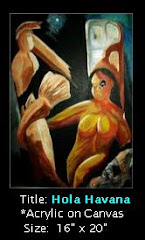Earlier today a conversation with my Sister and Dad (85) gave me an idea of what to blog about today . . . a classic vaudeville routine best known as “Slowly I Turned “ or sometimes “Niagara Falls”.
They asked me if I remembered the routine, and I said yes, and gave them a little of the history of it. At least as much as I could remember. That, of course, prompted me to come back to my computer and do a bit more research.
You probably remember the routine, but you may recall it as being done by either Lucille Ball in 1952, Abbott & Costello in 1944 (or again in 1952), or by the Three Stooges also in 1944.
It has been parodied since then, on shows like Moonlighting and M.A.S.H. as well.
For those of us of a certain age, it is a part of our collective memory. Say `Slowly I turned . .. ‘, and most people my age will know immediately what it refers to. It revives a faint taste of a form of entertainment that pretty much vanished more than 70 years ago.
Vaudeville.

Image from the Library of Congress
Vaudeville, from the 1880’s until the early 1930s, was a thriving form of entertainment in the United States and Canada. It consisted of a series of unrelated variety acts that toured the country, and would be part of a larger `bill’ in theatres.
Singers, dancers, acrobats, clowns, jugglers, freak shows, magicians, animal acts . . . you name it, and vaudeville had it.
Many of the early TV variety shows were in reality little more than vaudeville theatre brought to the airwaves. Some of the early TV stars . . .Milton Berle, Phil Silvers, Frank Fontaine . . . started in Vaudeville Theatre or it’s somewhat less respectable cousin, Burlesque.
Vaudeville . . . at least `polite’ Vaudeville, was presented to mixed company, and without serving liquor. Burlesque was a courser bill of fare, often featuring scantily clad young ladies, or strippers . . . along with baggy pants comedians and other acts.
But Abbott and Lou Costello were both Burlesque performers, long before they teamed up in 1935. The Three Stooges started out as a Vaudeville act with Ted Healy. Morey Amsterdam started in Vaudeville in 1922, and moved up to working in a Speakeasy run by Al Capone.
If you scratched any middle-aged TV performer in the early 1950’s, you’d just about always find a Vaudevillian underneath. Just some of the names from Vaudeville and Burlesque included:
Houdini
Sophie Tucker
Eddie Cantor
George M. Cohan
Jack Benny
Eddie Foy
Red Buttons
Buster Keaton
Burns & Allen
WC Fields
Will Rogers
The Marx Brothers
Bob Hope
Vaudeville began dying off in the 1920s, with the growing popularity of silent movies. For a time, theatres incorporated both. You’d get live performances, and a movie for your 25 cents.
But eventually, particularly after sound was perfected, live acts were dropped from the bill in favor of less expensive (and more dependable) film.
Many vaudevillians moved into movies and radio, and some into Television. But there was a problem.
A Vaudeville act . . . be it a comedian, animal act, or a magician . . . could do the same act 6 shows a day, 6 days a week, for 20 years and never run out of audiences. One appearance on a big TV show, and a carefully honed and cultivated act would be seen by 20 million viewers, pretty much `burning it’ forever.
You could be the greatest acrobat in the world, but after appearing on Jackie Gleason or Ed Sullivan once, the producer would come out and exclaim . . .”Wow! That was great! What else can you do?”
One of the reasons Abbott & Costello’s fortunes are said to have waned in the 1950s was because they were unwilling to `trust’ new routines, and relied on the tried and true bits they’d used for years successfully in Vaudeville.
After more than a dozen feature films, and a TV series, they’d gone to the well too often with the same material. Newer comedy teams, like Martin & Lewis, captured the attention of America largely because they updated their material over time.
Which brings us to `Slowly I turned”, which is perhaps one of the most copied Vaudeville routines of all.
The skit goes something like this:
A disheveled man corners a stranger and tells him a tale of betrayal by his wife or girlfriend, and his best friend. She ran off with the rogue and he spends years trailing them from town to town, finally catching up with them in Niagara Falls.
He describes how he approached, and then throttled the man (step by step . . . slowly I turned), acting out the attack on the helpless stranger. Every time the listener to the story says the magic words, "Niagara Falls," the teller attacks him again.
The origins are in dispute, with three different comedians claiming to have created the routine. Joey Faye claimed authorship, as did Harry Steppe, and Samuel Goldman.
In any event, here are three versions of this venerable routine.









No comments:
Post a Comment